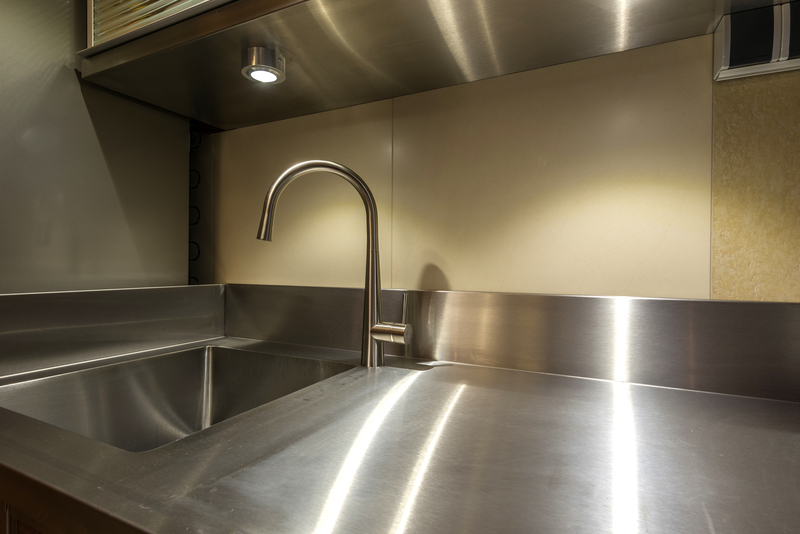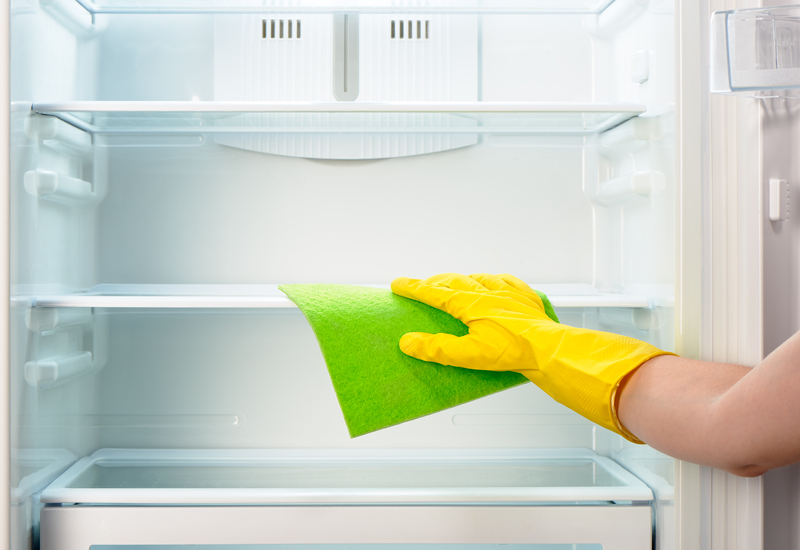The Complete Guide to Exceptional Curtain Hygiene
Posted on 26/05/2025
The Complete Guide to Exceptional Curtain Hygiene
Ensuring your curtains remain immaculate is not just about maintaining aesthetics--it's a vital aspect of indoor hygiene, air quality, and overall well-being. Welcome to your comprehensive resource for outstanding curtain hygiene: an all-in-one guide covering everything you need to know about cleaning, maintaining, and preserving the life of your curtains.
Why Is Curtain Hygiene Important?
Your curtains do more than frame the windows--they act as filters for dust, allergens, pet hair, and airborne pollutants. Over time, dirty curtains can negatively impact your indoor air quality, provoke allergies, and even harbor mold and bacteria. Prioritizing exceptional curtain cleanliness helps you:
- Enhance the indoor air quality in your home
- Reduce allergy and asthma triggers
- Maintain the appearance and longevity of your curtains
- Prevent the buildup of odors and stains
- Create a cleaner, more welcoming living space

Common Curtain Contaminants
Understanding what accumulates on your curtains is the first step toward outstanding curtain hygiene. Here are the most common culprits:
- Dust Mites: Microscopic particles that thrive in fabric and contribute to allergies.
- Pet Hair: Especially problematic for pet owners; sticks to fabric and causes odors.
- Mold and Mildew: Can grow in damp conditions, especially in humid rooms.
- Pollen: Entering through open windows, it clings to curtains in spring and summer.
- Cooking Fumes and Grease: Particularly in kitchens, curtains can absorb airborne oils and odors.
- Smoke: From cigarettes, fireplaces, or candles--quickly absorbed by fabric.
How Often Should You Clean Your Curtains?
Frequency matters for maintaining excellent curtain hygiene! A general guideline is:
- Light vacuuming or dusting: Once a week, especially in high-traffic areas.
- Spot-cleaning: As soon as spills or stains occur.
- Full wash/dry cleaning: Every 3-6 months, depending on environment.
Homes with children, pets, smokers, or higher dust levels should increase the frequency for optimal curtain cleanliness.
Expert Methods for Optimal Curtain Cleaning
There are numerous ways to achieve exceptional curtain cleanliness. Choosing the best approach depends on fabric type, curtain construction, and personal preferences.
1. Weekly Maintenance: Vacuuming and Shaking
- Use a soft brush attachment on your vacuum cleaner.
- Gently vacuum from top to bottom, paying attention to pleats and folds.
- Regularly shake the curtains outdoors to remove embedded dust.
2. Steam Cleaning for Deep Hygiene
Steam cleaning is superb for killing bacteria, mites, and mold spores, making it a favorite among those pursuing exceptional drapery hygiene. Use a handheld garment steamer:
- Test a small, hidden area first.
- Move the steamer evenly across all surfaces.
- Allow curtains to dry completely with windows open.
3. Machine Washing Washable Curtains
This is suitable for cotton, polyester, and some blends. Follow these steps:
- Check and follow the manufacturer's care label.
- Remove hooks, rings, or metal components before washing.
- Use a gentle cycle with mild detergent.
- Hang curtains immediately after washing to avoid wrinkles.
4. Dry Cleaning for Delicate Fabrics
Silk, velvet, wool, and certain lined curtains require specialist care. Discover the benefits:
- Protects texture and color
- Avoids shrinkage or warping
- Ensures a thorough, professional clean
5. Spot Cleaning: Fast Solutions for Accidental Stains
Immediate action can prevent permanent staining--and contribute to lasting curtain hygiene.
- Blot stains gently--don't rub.
- Use a mild soap and water solution or fabric-specific cleaner.
- Test on an inconspicuous area before treating the visible stain.
Special Curtain Materials and Their Hygiene Needs
Different curtain fabrics demand unique cleaning strategies for safe and exceptional hygiene.
Cotton and Linen Curtains
- Both are usually machine washable.
- Avoid bleach unless necessary--it can weaken fibers.
- Iron while slightly damp for a crisp finish.
Velvet and Silk Curtains
- Dry cleaning recommended to protect texture and color vibrancy.
- Never wring or twist these fabrics when spot-cleaning.
- Use a soft brush for gentle surface cleaning between professional cleanings.
Blackout and Lined Curtains
- Check if lining is washable--most require dry cleaning.
- Regular vacuuming essential to prevent dust buildup.
- Never put in a hot dryer--air dry only to prevent lining damage.
Sheer or Lace Curtains
- Hand wash or use a delicate machine cycle inside a mesh laundry bag.
- Hang to dry, avoiding direct sunlight to prevent yellowing or weakening fibers.
Eco-Friendly Curtain Hygiene Solutions
Adopt sustainable cleaning practices that benefit both your home and the environment:
- Utilize biodegradable, non-toxic cleaning agents.
- Opt for vinegar and baking soda solutions for natural stain removal and deodorizing.
- Air dry whenever possible to save energy.
- Remove and clean curtains seasonally to extend their life and reduce laundering frequency.
Preventing Curtain Contamination: Proactive Hygiene Practices
Outstanding curtain hygiene isn't just about cleaning--it's about prevention. Here's how to minimize buildup:
- Ventilate regularly--open windows to reduce moisture and mildew risk.
- Install air purifiers to trap dust and allergens before they settle on curtains.
- Keep pets away from window areas.
- Clean window frames and sills alongside curtains for comprehensive cleanliness.
- Consider curtain tiebacks to reduce fabric's exposure to dust-prone areas.
Professional Curtain Cleaning: When to Consider It
Some circumstances call for expert help to achieve exceptional curtain hygiene:
- Heavy staining, mold, or mildew infestation
- Large or unwieldy curtain sets
- Highly valuable or delicate drapery fabrics
- Allergy-prone households needing medical-grade hygiene standards
Professional cleaning services employ specialized equipment and products that can rejuvenate your curtains, restore color, and ensure an immaculate finish.
Addressing Health and Allergy Concerns
Unwashed curtains can become a significant source of indoor allergen accumulation:
- Dust mites and pollen can trigger respiratory issues.
- Mold spores threaten those with asthma or weakened immune systems.
- Pets, smoke, and cooking vapors can make symptoms worse.
Consistent, exceptional drapery hygiene reduces these health risks significantly, making regular curtain care an indispensable part of home health management.
Tips for Maintaining Long-Term Curtain Hygiene
- Create a cleaning schedule--and stick to it for year-round freshness.
- Rotate curtains regularly if you have seasonal sets to avoid overuse.
- Use blinds or window shades to shield curtains from direct sun (reducing fading and mildew risk from condensation).
- Inspect for and repair any damage (tears, loose hems, missing hardware) which may trap debris.

Frequently Asked Questions About Curtain Hygiene
Can I wash all types of curtains at home?
Not always. Read care labels. Delicate or lined curtains often require dry cleaning. When in doubt, consult a professional.
Do blackout curtains need special care?
Yes--these often have foam backings or linings that degrade in heat or water. Vacuum regularly and dry clean when necessary.
How do I get rid of mold or mildew on curtains?
Treat affected areas quickly with diluted vinegar. For heavy infestation or delicate fabrics, use professional services to ensure complete removal and protect your health.
Are there any fabric deodorizing tips for fresher curtains?
Sprinkle baking soda, let it sit, and vacuum off for a natural deodorizer. Using essential oil-based fabric sprays can add subtle, long-lasting freshness.
What's the easiest way to maintain clean curtains between washes?
Use a vacuum with a soft brush attachment weekly, address stains promptly, and air out curtains outdoors monthly.
Conclusion: Transform Your Space With Exceptional Curtain Hygiene
Investing in exceptional curtain hygiene enhances not only the look and feel of your living spaces but also contributes directly to your home's health environment. With the strategies, tools, and expert tips above, you can effortlessly maintain clean, fresh, and long-lasting curtains.
- Assess your curtain fabrics and their unique care needs.
- Create a regular cleaning and maintenance routine.
- Take action now for fresher, cleaner, and more hygienic window treatments!
For more information, consider consulting curtain care specialists or explore manufacturer guidelines for your drapery's exact needs. With this complete guide to exceptional curtain hygiene, enjoy a healthier, more beautiful home.




